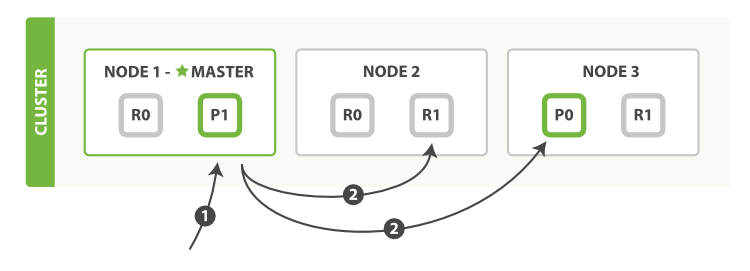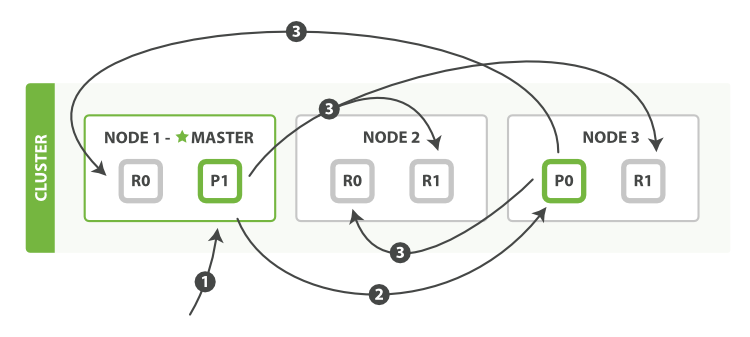
Multidocument Patterns
The patterns for the mget and bulk APIs are similar to those for
individual documents. The difference is that the coordinating node knows in
which shard each document lives. It breaks up the multidocument request into
a multidocument request per shard, and forwards these in parallel to each
participating node.
Once it receives answers from each node, it collates their responses
into a single response, which it returns to the client, as shown in Retrieving multiple documents with mget.

mgetHere is the sequence of steps necessary to retrieve multiple documents
with a single mget request:
-
The client sends an
mgetrequest toNode 1. -
Node 1builds a multi-get request per shard, and forwards these requests in parallel to the nodes hosting each required primary or replica shard. Once all replies have been received,Node 1builds the response and returns it to the client.
A routing parameter can be set for each document in the docs array.
The bulk API, as depicted in Multiple document changes with bulk, allows the execution of multiple create, index, delete, and update requests within a single bulk request.

bulkThe sequence of steps followed by the
bulk API are as follows:
-
The client sends a
bulkrequest toNode 1. -
Node 1builds a bulk request per shard, and forwards these requests in parallel to the nodes hosting each involved primary shard. -
The primary shard executes each action serially, one after another. As each action succeeds, the primary forwards the new document (or deletion) to its replica shards in parallel, and then moves on to the next action. Once all replica shards report success for all actions, the node reports success to the coordinating node, which collates the responses and returns them to the client.
The bulk API also accepts the consistency parameter
at the top level for the whole bulk request, and the routing parameter
in the metadata for each request.